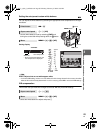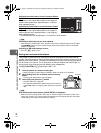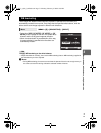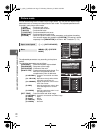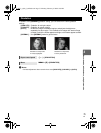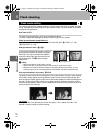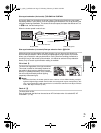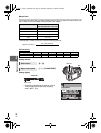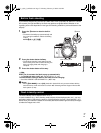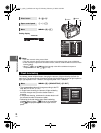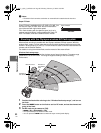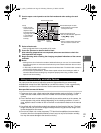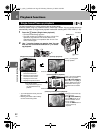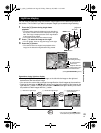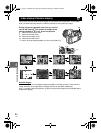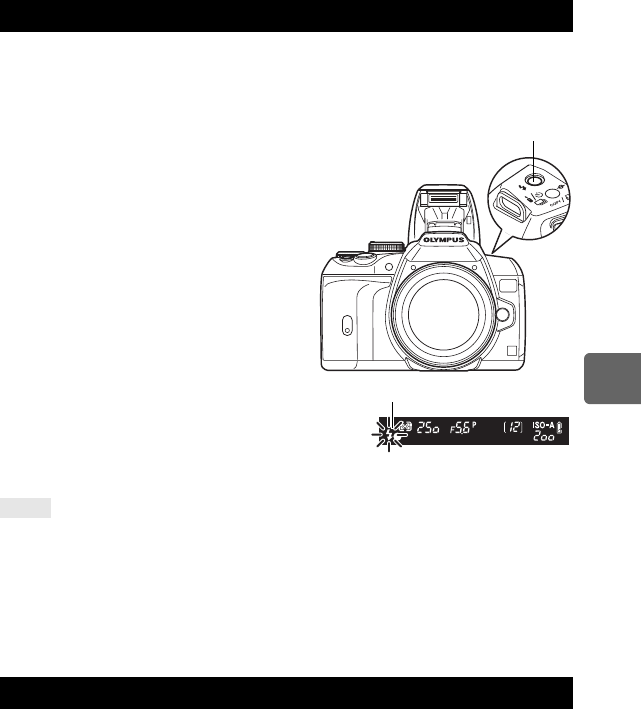
77
EN
5
Flash shooting
If you shoot a subject using a lens that is wider than 14mm (equivalent to 28mm on a 35mm
film camera), the light emitted by the flash may produce a vignette effect. Whether or not
vignetting occurs also depends on lens type and shooting conditions (such as distance to the
subject).
1 Press the # button to raise the built-in
flash.
• The built-in flash will pop up automatically and
fire in low light conditions under the following
modes.
AUTO/i/&///G/r/g
2 Press the shutter button halfway.
•The # (flash stand-by) mark lights when the
flash is ready to fire. If the mark is blinking, the
flash is charging. Wait until charging is
complete.
3 Press the shutter button all the way.
When you do not want the flash to pop up automatically:
j Set [AUTO POP UP] to [OFF]. g“AUTO POP UP” (P. 102)
To shoot without having to wait for the flash to finish charging:
j See “RLS PRIORITY S/RLS PRIORITY C” (gP. 99).
x Notes
• When [#RC MODE] is set to [ON], the built-in flash will fire only to communicate with the
external flash so it will not function as a flash. g“Shooting with the Olympus wireless RC
flash system” (P. 80)
The flash intensity can be adjusted from +3 to -3.
In some situations (e.g., when shooting small subjects, distant backgrounds, etc.), you may
get better results by adjusting the amount of light emitted by the flash (“flash intensity”). It is
useful when you intend to increase the contrast (distinction between light and dark) of images
to make the images more vivid.
Built-in flash shooting
TIPS
Flash intensity control
#
button
Viewfinder
Flash stand-by mark
s0023_e_00_0_unified.book Page 77 Monday, February 2, 2009 5:18 PM



